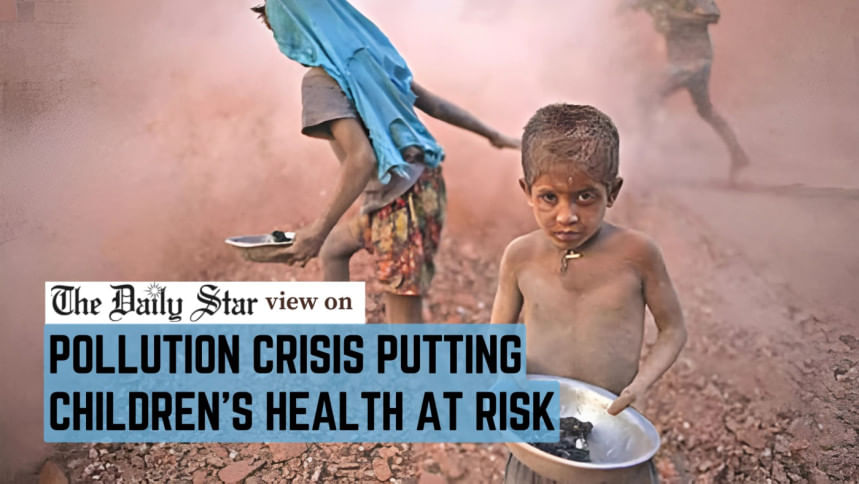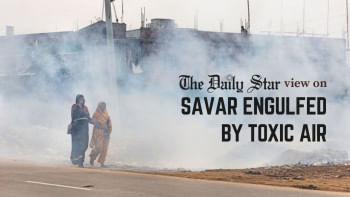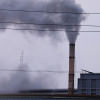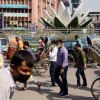Pollution is killing our children

Unicef's new handbook on Children's Health and the Environment reminds us of a devastating cost of environmental pollution: the lives of our children. It highlights some grim facts—in 2021, air pollution caused more than 235,000 deaths, 19,000 of them children under five. Between 2018 and 2021, Dhaka repeatedly ranked as the second most polluted city in the world, while in 2023 Bangladesh was ranked the most polluted country globally.
Multiple sources of pollution are currently putting our children at risk. Because their organs and immune systems are still developing, children are particularly vulnerable to air pollution, which at high levels can cause pneumonia, asthma, childhood leukaemia, and neurodevelopmental disorders. Noise pollution also harms children, leading to hearing loss. The risk is particularly grave in Dhaka, one of the noisiest cities in the world, but other major cities do not lag far behind.
Another serious health threat comes from e-waste. According to a study by Buet, an estimated 2.81 million tonnes of e-waste are generated annually in the country, a figure projected to rise to 4.62 million tonnes by 2035. Children living near e-waste recycling sites are exposed to toxic air that can impair lung function, damage the immune system, affect growth, and even alter DNA. Exposure of expectant mothers to such toxins is linked to stillbirths and premature births.
Given this reality, it is reassuring to learn that the interim government has taken some steps to reduce air pollution. For instance, the Department of Environment (DoE) conducted drives across the country, shutting down 462 brick kilns and imposing heavy fines on others. It has ordered a halt to brick-making in Savar, one of the most polluted areas, from September—allowing only kilns that use cleaner technology to operate. The DoE also reported 598 mobile courts and 1,363 cases filed against polluters, including vehicles, brick kilns, steel mills, hazardous waste disposal units, lead-acid battery recycling factories, tyre pyrolysis plants, and charcoal factories. The list goes on.
While these initiatives are commendable, their outcomes remain far from satisfactory. The DoE and other relevant state agencies must enforce all existing environmental laws, including removing unfit vehicles from the streets, implementing no-honking zones, enforcing stricter construction rules to curb dust pollution, and ensuring cleaner technologies in brick kilns. The government should also expand public awareness campaigns on the dangers of pollution and the importance of adopting cleaner practices. All this must be done as part of a coordinated, long-term strategy involving the government, civil society, and international partners. We must protect not only today's children but also future generations from this entirely preventable crisis.

 For all latest news, follow The Daily Star's Google News channel.
For all latest news, follow The Daily Star's Google News channel. 









Comments